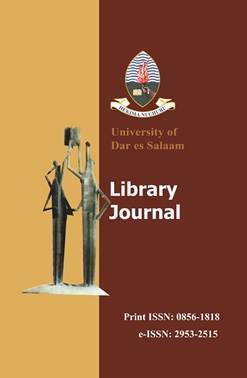Perceived usefulness and ease of use of Web 2.0 tools in university teaching and learning in Tanzania
Keywords:
Web 2.0, web technologies, users ' perception, teaching and learning, e-learningAbstract
Despite the potentials Web 2.0 technologies have in supporting teaching and learning processes in higher education institutions, there is a continuing debate on their perceived usefulness and ease of use. As such, this study examined academic staff and students ' perceptions on the use of Web 2.0 technologies in teaching and learning activities in five Tanzanian universities. Specifically, the study aimed at determining the perceived usefulness and exploring perceived ease of use of Web 2.0 technologies in teaching and learning activities. A mixed approach (quantitative and qualitative) was employed by the study. Accordingly, a cross-sectional survey, alongside documentary review, was used to collect data from a sample of 350 respondents selected through simple randomly sampling and 10 purposively selected informants. The study findings suggest that faculty members and students used Web 2.0 technologies for academic discussions, posting and accessing lecture slides and tutorials, sharing materials and scholarly communication. The findings further inform that perceived usefulness and perceived ease of use of Web 2.0 technologies are important predictors of the adoption of these tools. On the basis of these findings, ICT infrastructure investment, training to upgrade skills and knowledge, policies and usage guidelines and other usage motivations are recommended to be in place to promote the usage of Web 2.0 technologies in teaching and learning. Besides, technical support to customise Web 2.0 technologies in teaching and learning activities is crucial.


